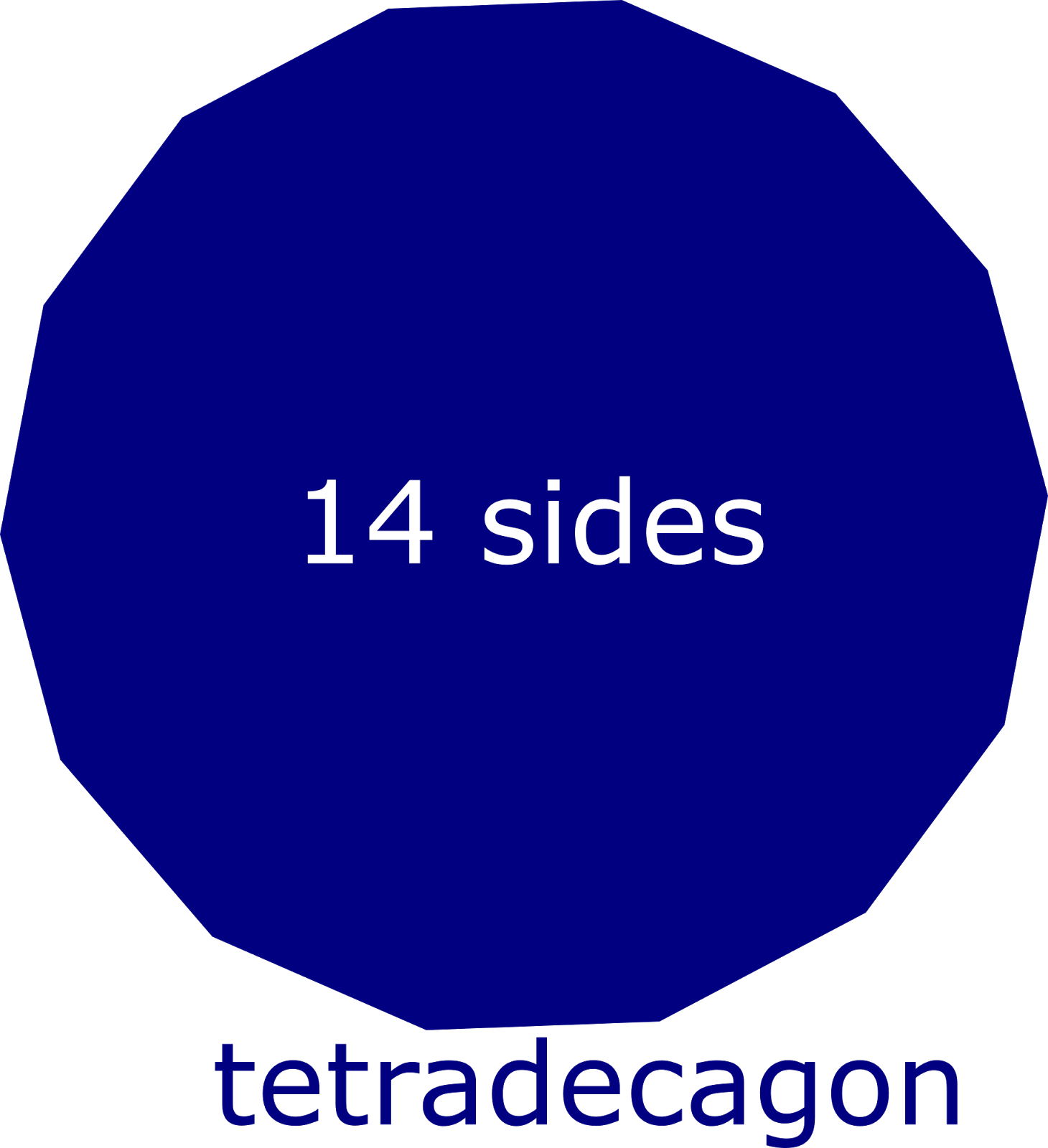Discovering The Intricacies Of The 14-Sided Shape: A Comprehensive Guide
The world of geometry is fascinating, filled with various shapes and figures that exhibit unique properties and characteristics. Among these shapes, the 14-sided shape, also known as a tetradecagon, stands out as a remarkable polygon that captivates mathematicians, architects, and artists alike. Understanding the intricacies of the 14-sided shape not only enhances our appreciation for geometry but also opens the door to numerous applications in the real world. In this article, we will delve deep into the properties and significance of the 14-sided shape, exploring its mathematical foundations, real-life applications, and its aesthetic appeal in art and design.
The tetradecagon is not just an ordinary polygon; it is a geometric structure that comes alive in various fields, from architecture to graphic design. By examining its angles, sides, and symmetries, we can unlock the secrets behind its construction and utilization. Whether you are a student, a professional in a related field, or simply a geometry enthusiast, this comprehensive guide will provide valuable insights into the 14-sided shape.
As we embark on this journey through the world of the 14-sided shape, we will address common questions, unveil fascinating facts, and highlight its importance in both theoretical and practical contexts. Join us as we explore the 14-sided shape and discover the beauty of geometry!
What is a 14-Sided Shape?
The 14-sided shape, or tetradecagon, is defined as a polygon with 14 straight sides and 14 angles. The term "tetradecagon" is derived from the Greek words "tessera," meaning four, and "deka," meaning ten, symbolizing the number 14. Its structure can be regular, where all sides and angles are equal, or irregular, with varying lengths and angles.
How Do You Calculate the Interior Angles of a 14-Sided Shape?
To calculate the interior angles of a 14-sided shape, you can use the formula:
Interior Angle = (n - 2) × 180° / n
Where "n" is the number of sides. For a tetradecagon, n equals 14:
- Interior Angle = (14 - 2) × 180° / 14
- Interior Angle = 12 × 180° / 14
- Interior Angle = 2160° / 14
- Interior Angle ≈ 154.29°
This means that each interior angle of a regular tetradecagon measures approximately 154.29 degrees.
What Are the Properties of a Regular 14-Sided Shape?
A regular 14-sided shape possesses several distinctive properties:
- All sides are of equal length.
- All interior angles are equal, measuring approximately 154.29°.
- The sum of all interior angles is 2160°.
- The shape has 14 lines of symmetry.
- The exterior angles sum up to 360°.
Where Can You Find 14-Sided Shapes in the Real World?
The tetradecagon may not be a common shape in everyday life, but it does appear in various contexts. Here are some examples:
- Architectural designs, where unique polygonal shapes are utilized for aesthetic and functional purposes.
- Graphic design and digital art, where polygons are often used to create visual elements.
- Games and puzzles that incorporate geometric shapes, including the tetradecagon.
- Mathematical models and simulations that require complex polygonal forms.
How is the 14-Sided Shape Used in Art and Design?
The 14-sided shape has a significant presence in art and design, providing a sense of harmony and balance. Artists and designers often utilize the tetradecagon for its aesthetic appeal:
- Creating patterns and tessellations in artworks.
- Incorporating the shape into logo designs for a unique identity.
- Using the tetradecagon as a basis for intricate sculptures.
What Mathematical Concepts Relate to the 14-Sided Shape?
The study of the 14-sided shape is intertwined with various mathematical concepts, including:
- Geometry, where the properties of polygons are explored.
- Trigonometry, for calculating angles and dimensions.
- Topology, examining the relationships between shapes.
How Can You Construct a 14-Sided Shape?
Constructing a regular 14-sided shape can be achieved through various methods, including:
- Using a compass and straightedge for precise measurements.
- Employing graph paper for accurate plotting of vertices.
- Utilizing computer software for digital design and modeling.
What Are the Challenges of Working with 14-Sided Shapes?
Working with the 14-sided shape can present challenges, such as:
- Difficulty in accurately measuring angles and side lengths.
- Complexity in visualizing the shape in three-dimensional space.
- Limited applications compared to more common polygons.
Conclusion: Embracing the 14-Sided Shape in Geometry
In conclusion, the 14-sided shape, or tetradecagon, is a captivating geometric figure that offers a wealth of knowledge and applications. From its mathematical properties to its presence in art and architecture, the tetradecagon serves as a reminder of the beauty and complexity found within the world of geometry. By understanding and appreciating the 14-sided shape, we can enrich our understanding of mathematical concepts and their applications in everyday life.
Discovering The Ages Of P Diddy's Daughters
Unveiling The Life Of Leslie Hamilton Gearren
Nadia Gamer: The Rise Of A Gaming Sensation


